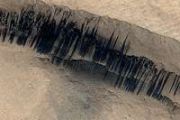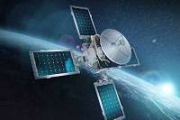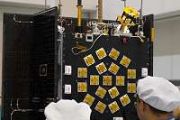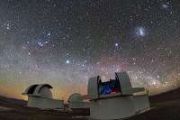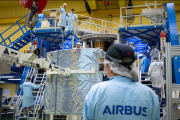
Copernical Team
ESA Business Incubation Centres celebrate two decades of innovation

On 13 and 14 February 2025, the European Space Agency (ESA) celebrated 20 years of supporting space innovation through its ESA Business Incubation Centres (BIC) network. The event in Munich, Germany, brought together entrepreneurs, successful space companies, experts and policymakers.
DGIST Unveils Motion Powered System for Both Electricity and Light
 DGIST (President Kunwoo Lee) has revealed that a combined research effort by Prof. Kim Hoe Joon (Department of Robotics and Mechatronics), Dr. Jeong Soon Moon (Division of Energy and Environmental Technology), and Prof. Mishra (University of Southern Denmark) has yielded a self-powered sensor that simultaneously produces electricity and light through motion and pressure. This battery-free advanc
DGIST (President Kunwoo Lee) has revealed that a combined research effort by Prof. Kim Hoe Joon (Department of Robotics and Mechatronics), Dr. Jeong Soon Moon (Division of Energy and Environmental Technology), and Prof. Mishra (University of Southern Denmark) has yielded a self-powered sensor that simultaneously produces electricity and light through motion and pressure. This battery-free advanc Green light for AI-driven mapping of New Zealand's forests
 Researchers from Flinders University and New Zealand have successfully integrated artificial intelligence and 3D laser scanning to map radiata pine plantations across much of New Zealand's North Island with remarkable accuracy.
This innovative method differentiates between large-scale plantations, small woodlots, and newly established stands as young as three years old. The technique demon
Researchers from Flinders University and New Zealand have successfully integrated artificial intelligence and 3D laser scanning to map radiata pine plantations across much of New Zealand's North Island with remarkable accuracy.
This innovative method differentiates between large-scale plantations, small woodlots, and newly established stands as young as three years old. The technique demon Satellogic and Telespazio Brasil to provide low-latency satellite imagery for the Brazilian Air Force
 Satellogic and Telespazio Brasil have signed a multi-year contract with the Brazilian Air Force (Forca Aerea Brasileira, FAB) to provide low-latency satellite imagery for defense and security applications. The agreement, which includes an initial one-year term with an option for a one-year extension, highlights Satellogic's growing role in delivering real-time geospatial intelligence to military
Satellogic and Telespazio Brasil have signed a multi-year contract with the Brazilian Air Force (Forca Aerea Brasileira, FAB) to provide low-latency satellite imagery for defense and security applications. The agreement, which includes an initial one-year term with an option for a one-year extension, highlights Satellogic's growing role in delivering real-time geospatial intelligence to military CSA awards $72M contract to Spire Global Canada for WildFireSat Mission
 Spire Global Canada, has secured a Can$72 million contract, including harmonized sales tax, from the Government of Canada. The company will design and develop a satellite constellation dedicated to monitoring active wildfires across Canada from space as part of the country's WildFireSat mission. Spire will collaborate with OroraTech, a leader in space-based thermal intelligence, to develop the p
Spire Global Canada, has secured a Can$72 million contract, including harmonized sales tax, from the Government of Canada. The company will design and develop a satellite constellation dedicated to monitoring active wildfires across Canada from space as part of the country's WildFireSat mission. Spire will collaborate with OroraTech, a leader in space-based thermal intelligence, to develop the p Physicists measure a key aspect of superconductivity in "magic-angle" graphene
 Superconducting materials are similar to the carpool lane in a congested interstate. Like commuters who ride together, electrons that pair up can bypass the regular traffic, moving through the material with zero friction.
But just as with carpools, how easily electron pairs can flow depends on a number of conditions, including the density of pairs that are moving through the material. This
Superconducting materials are similar to the carpool lane in a congested interstate. Like commuters who ride together, electrons that pair up can bypass the regular traffic, moving through the material with zero friction.
But just as with carpools, how easily electron pairs can flow depends on a number of conditions, including the density of pairs that are moving through the material. This SFL Missions Inc. Secures CSA Contract for HAWC Satellite Concept Study
 SFL Missions Inc. has been selected by the Canadian Space Agency (CSA) to conduct a conceptual design study for the High-Altitude Aerosols, Water Vapour, and Clouds (HAWC) satellite mission. This initiative represents Canada's contribution to NASA's Atmosphere Observing System (AOS), which is scheduled for launch in 2031.
"The HAWC mission will collect atmospheric data that will support ex
SFL Missions Inc. has been selected by the Canadian Space Agency (CSA) to conduct a conceptual design study for the High-Altitude Aerosols, Water Vapour, and Clouds (HAWC) satellite mission. This initiative represents Canada's contribution to NASA's Atmosphere Observing System (AOS), which is scheduled for launch in 2031.
"The HAWC mission will collect atmospheric data that will support ex Webb unveils evolving dust system and energetic jets
 This latest NASA/ESA/CSA James Webb Space Telescope Picture of the Month showcases HH 30 with extraordinary clarity. Set within the dark cloud LDN 1551 in the Taurus Molecular Cloud, this edge-on protoplanetary disc features both jets and a disc wind, emphasizing the turbulent environment in which stars and planets form.
Herbig-Haro objects, like HH 30, appear as luminous markers in star-f
This latest NASA/ESA/CSA James Webb Space Telescope Picture of the Month showcases HH 30 with extraordinary clarity. Set within the dark cloud LDN 1551 in the Taurus Molecular Cloud, this edge-on protoplanetary disc features both jets and a disc wind, emphasizing the turbulent environment in which stars and planets form.
Herbig-Haro objects, like HH 30, appear as luminous markers in star-f A lab with a view
 Image:
A lab with a view
Image:
A lab with a view Spinning Neutron Star Generates Immense Magnetic Fields
 An international team of scientists has successfully modeled the formation and evolution of some of the most powerful magnetic fields in the Universe. Led by researchers from Newcastle University, the University of Leeds, and institutions in France, the study was recently published in Nature Astronomy.
The findings reveal that the Tayler-Spruit dynamo, activated by fallback material from s
An international team of scientists has successfully modeled the formation and evolution of some of the most powerful magnetic fields in the Universe. Led by researchers from Newcastle University, the University of Leeds, and institutions in France, the study was recently published in Nature Astronomy.
The findings reveal that the Tayler-Spruit dynamo, activated by fallback material from s 














